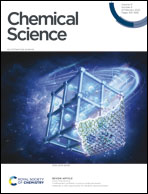Hydrogen bond activated glycosylation under mild conditions†
Abstract
Herein, we report a new glycosylation system for the highly efficient and stereoselective formation of glycosidic bonds using glycosyl N-phenyl trifluoroacetimidate (PTFAI) donors and a charged thiourea hydrogen-bond-donor catalyst. The glycosylation protocol features broad substrate scope, controllable stereoselectivity, good to excellent yields and exceptionally mild catalysis conditions. Benefitting from the mild reaction conditions, this new hydrogen bond-mediated glycosylation system in combination with a hydrogen bond-mediated aglycon delivery system provides a reliable method for the synthesis of challenging phenolic glycosides. In addition, a chemoselective glycosylation procedure was developed using different imidate donors (trichloroacetimidates, N-phenyl trifluoroacetimidates, N-4-nitrophenyl trifluoroacetimidates, benzoxazolyl imidates and 6-nitro-benzothiazolyl imidates) and it was applied for a trisaccharide synthesis through a novel one-pot single catalyst strategy.



 Please wait while we load your content...
Please wait while we load your content...